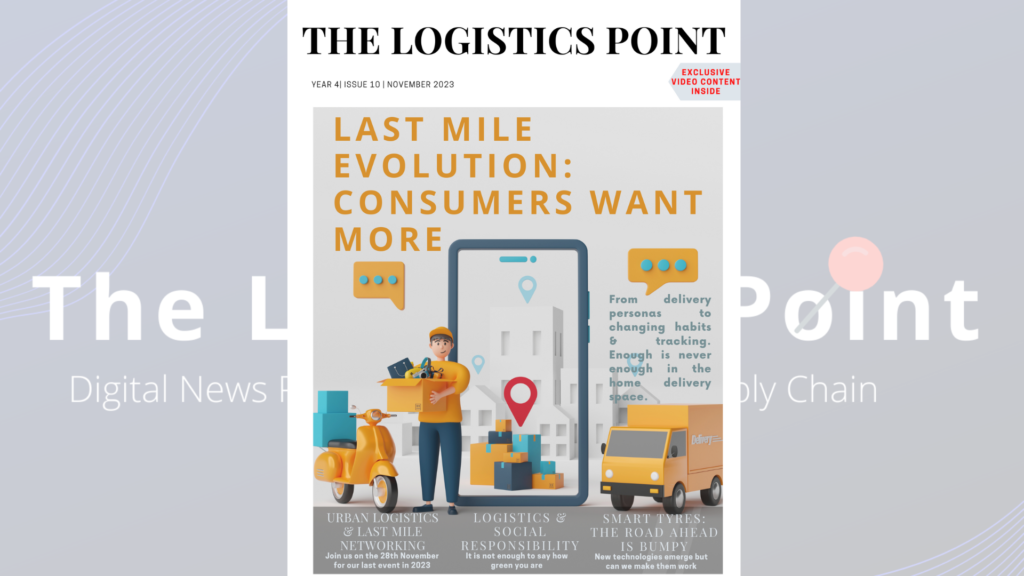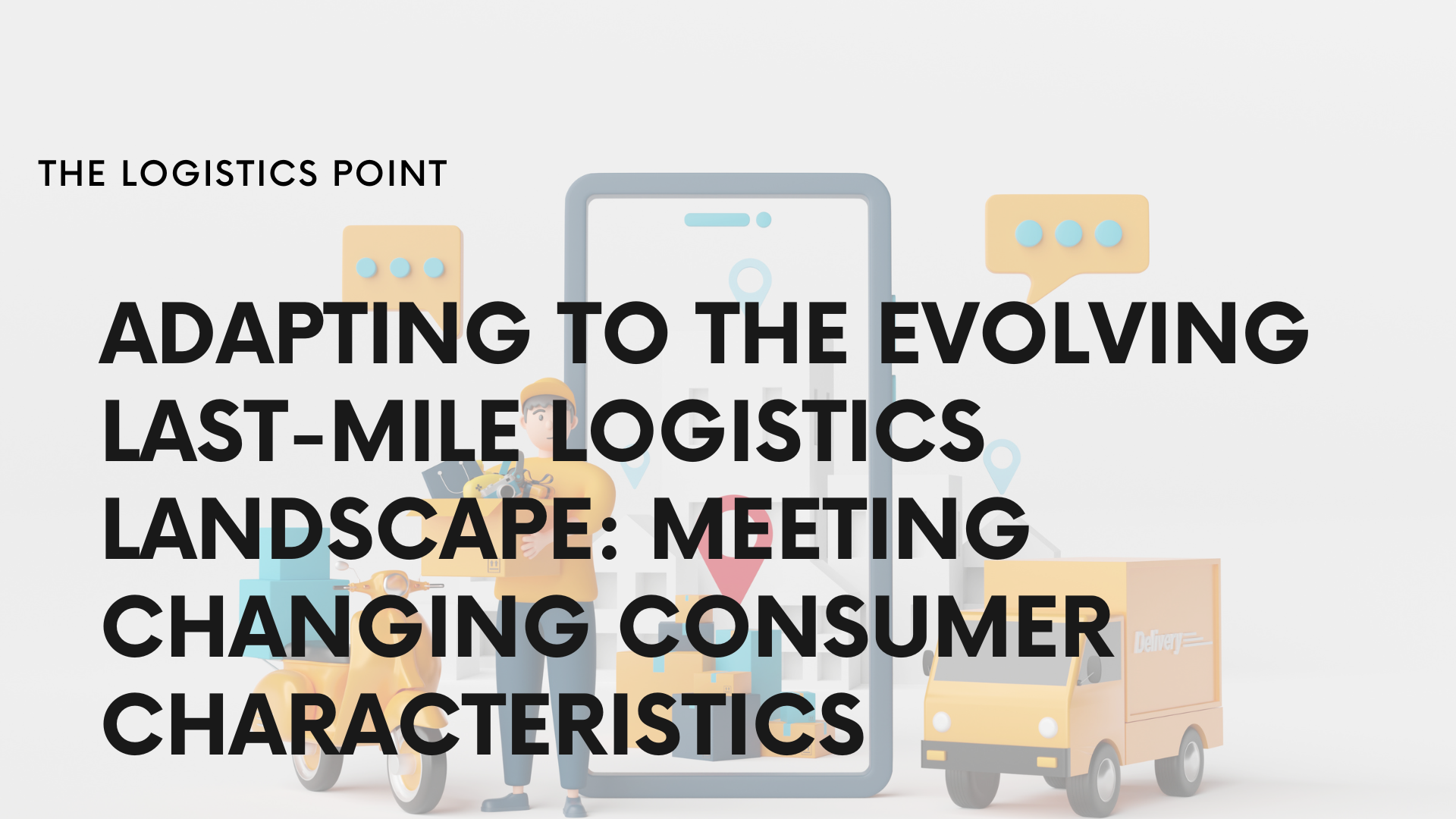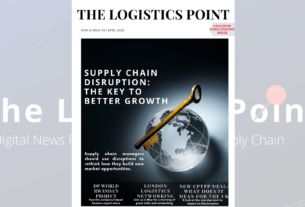The last-mile logistics sector has witnessed a significant transformation in recent times, shaped by shifting consumer characteristics, particularly in the wake of the rapid growth in e-commerce and the increased demand for home deliveries spurred by the global pandemic. The last mile, once considered the final leg of a product’s journey from seller to buyer, has emerged as a critical element in the supply chain, playing a pivotal role in influencing customer behavior and shaping the overall shopping experience.

One of the most prominent changes in the last mile has been the evolving expectations of consumers, irrespective of whether they fall within the B2B or B2C categories. Gone are the days of rigid delivery schedules and limited options. Today’s consumers crave flexibility, a shift that has presented both opportunities and challenges for the delivery and logistics sector.
Don’t miss our Last Mile & E-Com Event on the 28th November in Central London! Meet some of the leading voices in the last mile and retail sector for a unique networking event. Share your experience, learn new ways of doing business and get new contacts! Register now!
Consumer Choice and Its Impact on Behavior
Consumer choice has become a central theme in the last-mile logistics narrative. Offering consumers the ability to select from a range of home delivery options, each associated with its respective cost, has empowered buyers to decide what convenience is worth to them and what price they are willing to pay. This newfound flexibility in the last mile has significantly influenced buyer behavior, as shoppers are more likely to make purchasing decisions when they have control over their delivery preferences.
Although all demographics are driven by the same online shopping factors, they all have different delivery expectations impacting last mile logistics. Older buyers do not have as much experience ordering goods and services online.
Younger shoppers have grown up with smartphones and are at ease with digital commerce. Indeed, Descartes’ last mile study points out that Millennials and Gen Z consumers tend to shop online more, spend more money, and are more likely to increase ecommerce spend (50% vs. 33% of 55+ consumers). Millennials and Gen Z expect more from retailers’ ability to execute on deliveries— which, today, is a consideration for merchants that are attempting to meet the expectations of younger target groups.

However, it’s essential to acknowledge that the last mile, while empowering consumers, also plays a substantial role in shaping the cost and the overall customer experience. The delicate balance between minimizing costs and providing a positive experience has emerged as a key driver of customer loyalty and future sales profitability.
Real-Time Tracking and Customer Experience
A stellar customer experience has become a non-negotiable requirement for retailers. Consistency across all customer touchpoints is essential to ensure a seamless shopping journey. Real-time tracking has become a powerful tool in this regard. According to a recent last-mile delivery experience survey by Bettermile, a German-based last-mile technology company, 63% of consumers use real-time tracking when it is available.
Although all demographics are driven by the same online shopping factors, they all have different delivery expectations impacting last mile logistics. Older buyers do not have as much experience ordering goods and services online.
Last-mile delivery service providers can harness real-time data to optimize the delivery process and provide reporting for the whole trail from warehouse to the consumers’ door.’ Real-time tracking also empowers logistics companies to offer customers transparency on the status of their order and feel involved in the delivery process.
In the end, service options like preferred delivery time frames or alternate dropoff locations have huge operational impact. Flexibility for the consumer comes at a high cost for the logistics companies. Only technological solutions can bridge that gap between productivity and customer experience.
Simon Seeger, Managing Director at Bettermile

What’s more, the same percentage (63%) of users engage with the tracking feature three or more times throughout a delivery day. Consumers have come to rely on real-time tracking to stay informed about their orders. This tracking feature, however, is a two-way street. Recipients often use real-time tracking to request in-person deliveries and adjust their schedules to ensure a smooth handover. This not only simplifies the lives of delivery drivers but also enhances operational efficiency for carriers.

Customization of Delivery Choices
Another key aspect of the evolving last mile is the customization of delivery choices based on unique delivery personas. Recognizing that consumer preferences and expectations vary across demographics, tailoring last-mile delivery options to specific customer groups is crucial for building lasting customer relationships. Unfortunately, many retailers still fall short in this regard.
Moreover, it’s important to note that younger generations, such as Gen Z and Millennials, are more inclined to take action against retailers, compared to their older counterparts. This underscores the importance of meeting the home delivery requirements of diverse customer demographics effectively. Retailers must consider the values, priorities, and preferences of these demographics to define and serve multiple delivery personas successfully.
Facing the Complex Challenges
The last mile of logistics presents an intricate web of challenges, with the need to balance competing demands for speed, convenience, price, and sustainability at its core. Striking the right balance between these factors is no small feat and requires the deployment of innovative solutions, technology, and strategic decision-making.
Cost-efficiency is one of the most pressing challenges, influenced by factors like rising customer expectations, urban congestion, high fuel costs, labor expenses, and the optimization of delivery density. Overcoming these challenges while finding sustainable and cost-effective solutions is critical for the last-mile delivery industry.
In a world where consumers hold the power to drive change and shape the industry, the last mile logistics sector must adapt, innovate, and evolve to meet their evolving expectations while maintaining an unwavering commitment to sustainability and efficiency. The journey is complex, but it’s one that holds the key to a successful, customer-centric future for last-mile logistics.



